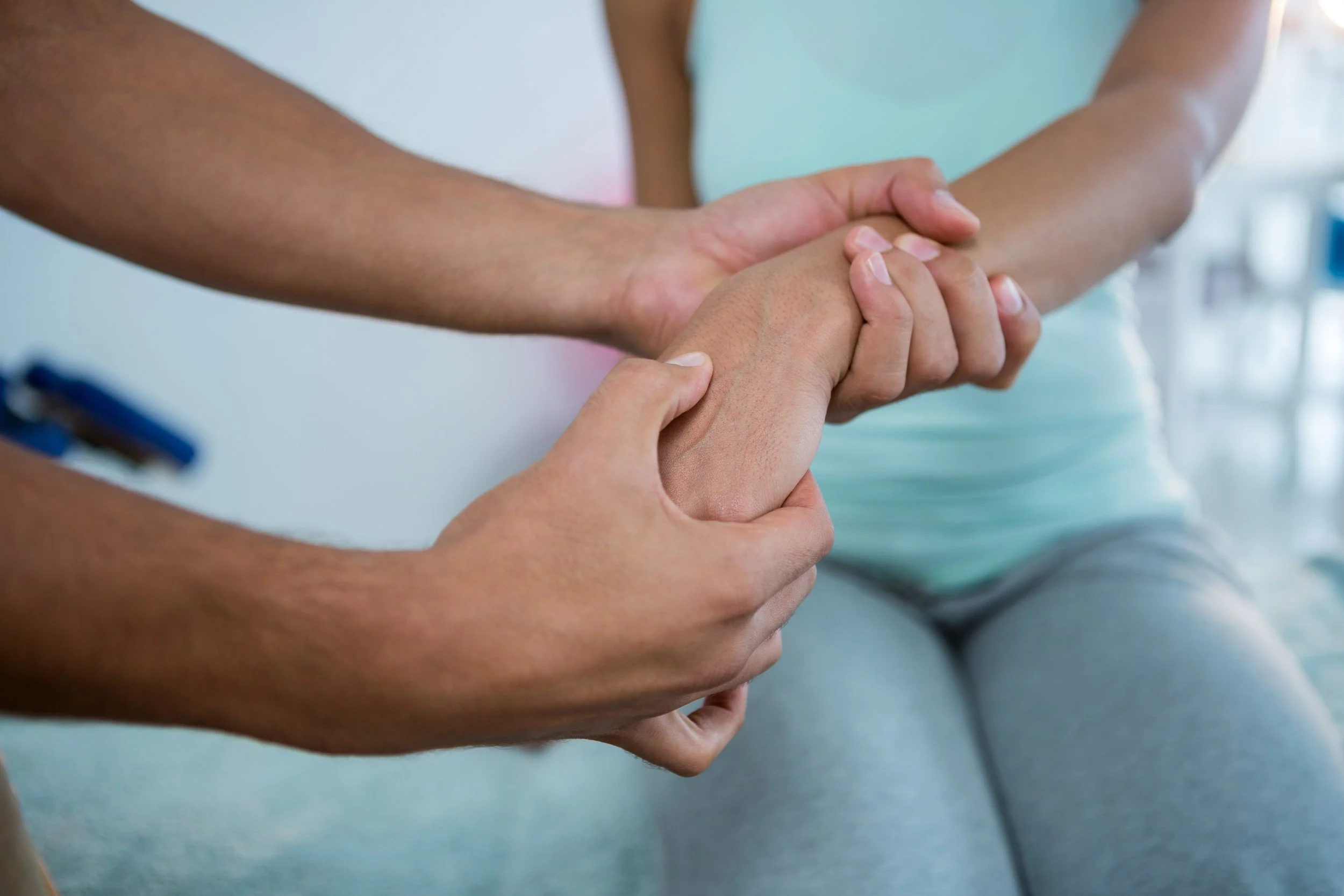They started late one night, the tremors that shook Michael Harding’s whole body when he lay down to sleep. “A bit weird,” thought Harding, then a 23-year-old Australian soldier stationed in Afghanistan. Just days before, he’d been in an hours-long siege in which his second-in-command was shot and killed.
Harding soon started shaking so much that he had to ask a friend to light his cigarettes. He couldn’t drink water from a bottle without pouring it down his shirt, and in the mess hall, his twitches got so spastic that he’d sometimes flip his tray.
He was medically discharged from the army in 2012 with severe PTSD and left with a new personality: withdrawn and unemotional. His sleep suffered, too. He had nightmares and night sweats.
To handle his worsening symptoms, Harding tried two kinds of talk therapy, four kinds of medication, and large nightly doses of scotch and Coke. When each of those failed, he turned to yoga, juicing, meditation and medicinal pot. That helped a little, but Harding’s anxiety and muscle spasms still hadn’t abated.
Around that time, his wife did what any desperate person would: she started poking around in online forums for something else that may help with his PTSD. She found glowing testimonials for floating, the practice of lying belly-up in a tank filled with warm water so salty you float.
– At the Float Clinic and Research Center at the Laureate Institute for Brain Research in Tulsa, OK, Feinstein uses a NeuroVerse brainstation EEG device to measure brain waves, wirelessly –
“To me, it seemed like a sham,” Harding says. But in March last year, he decided to try it anyway. He fell asleep in the tank, he says, and woke up an hour later feeling refreshed. By three floats, Harding says his anxiety and hyper-vigilance had subsided. By three months of floating, so had his night sweats. “After floating, I was really mellowed out,” he says. “I’m not really sure how it does it, but I do know that floating has allowed me to feel in a more confident, comfortable headspace.”
While floating has always had fans in the wellness world, it’s undeniably grown in popularity. In 2011, there were 85 float centers in the United States, according to Aaron Thompson, who runs an online directory of flotation centers, and now there are more than 250. Floating has also attracted the interest of a small group of scientists who are trying to figure out if it has a place as a kind of therapy for some kinds of distress, including PTSD. Any proof that this helps people with stress disorders is anecdotal at this point, but something special appears to happen in brain while the body floats. Now, some scientists, like the neuropsychologist Justin Feinstein, are trying to find out what.
Feinstein believes so deeply in the therapeutic potential of floating that he built his whole career, and laboratory, around trying to prove it. This year he opened the only float lab in the country: the Float Clinic and Research Center at the Laureate Institute for Brain Research in Tulsa, Oklahoma. Inside, you won’t find the claustrophobic coffin-like pods that make up most of the float tank market. His custom-made float pool has no enclosure, ensuring that people with anxiety disorders won’t be afraid to get in.
Then you open the door to the float room, you’re hit with warm air heated to the temperature of your skin. In the middle is a small, circular pool the size of a hot tub filled with 2,000 pounds of Epsom salt. Sit down, and you’ll bob like a buoy; lie back, and you’ll float without tensing a muscle. Press a button on the side of the tank, and the blue lights fade off into black.
You can’t see anything while you float. But what Feinstein can see going on in your brain is astounding.
In his research, he has floaters stick small waterproof sensors and an EEG device on their forehead to measure their brain waves, wirelessly. Down the hall is an MRI machine that people enter after they float.
Feinstein and his team are more than halfway through the first experiment ever to combine fMRI brain imaging and float tanks. They’re scanning the brains of healthy people before and after they float, and by comparing the two images, they’ll see how floating changes areas of activation in the brain.
Recent advances in neuroscience have allowed scientists to look inside the human brain during practices like meditation and see how brain activity changes. Research from fMRI studies show that meditating activates parts of the brain associated with attention and decreases activation in the amygdala, the part of the brain that kicks off the fight-or-flight response to a real or perceived threat—though the changes are more pronounced in expert meditators than beginners. Plenty of other research demonstrates the benefits of the practice, and its acceptance by the medical establishment has followed. The stance of the National Institutes of Health (NIH) is that research supports meditation for lowering blood pressure, easing symptoms of anxiety and depression and more, and the agency funds research on the topic.
NIH has yet, however, to provide funding for the investigation of flotation. Feinstein believes floating could be a shortcut for many people to reach a meditative state, and reap some of its proven benefits. “Floating has given me hope that a whole chunk of our population that normally would never be able to meditate could now achieve those sorts of deep meditative states,” Feinstein says.
The ongoing research is in its very early stages, but Feinstein and his team are seeing that floating tamps down anxiety in the brain in a way that rivals some prescription drugs and meditation. Back in 2005, Feinstein and his colleagues wondered what happened to the brain when a person took lorazepam, a drug sold under the brand name Ativan. It’s highly effective at reducing anxiety, but it can also be addictive.
They tested the drug on healthy volunteers, and neither the researchers nor the participants knew who was given lorazepam or a placebo. But the differences in their brains were unmistakable. On lorazepam, Feinstein says, the amygdala—where the fight-or-flight stress response originates—“basically shuts off,” which doesn’t happen with relaxation alone.
Now, a decade later, his current study replicates the lorazepam experiment using flotation instead of drugs. He scanned everyone’s brain before the experiment started, and then split his group of volunteers in half. Both groups got what they believed to be the intervention: either a 90-minute float or the same amount of time in a relaxing reclining chair. He gave everyone two sessions to let the novelty of the interventions die down, and then scanned their brain after the third session.
“Essentially what we found in the preliminary data is that the amygdala is shutting off post-float,” Feinstein says. “It’s nice to see that that can be done in a way that doesn’t require medication.”
Of course, for the scientific community to embrace floating, reproducible results—and many more studies—are needed.
Feinstein isn’t the first scientist to be fascinated by floating. Isolation tanks were invented and developed by scientists in the 1950s. But the widely credited founder, neuroscientist John C. Lilly, was “kind of a wackadoodle,” as Feinstein puts it, making the potential of the science harder to take seriously.
The 1980 Hollywood movie Altered States, inspired by Lilly’s life, didn’t help. In it, a scientist experiments with drugs and sensory deprivation tanks, eventually going mad. It was an instant cult classic—and a huge pain for research. Thomas H. Fine, who started researching flotation in the ’70s, says that when he would submit an experiment for funding, he remembers the typical response he’d receive: “This is a hippie fad.”
Through the ’90s, Fine, who now does PTSD research at the University of Toledo College of Medicine, published studies on floating, including one where subjects were given eight 40-minute float sessions. After drawing their blood throughout the intervention, he found a 22% drop in their levels of the stress-signaling hormone cortisol.
Though it’s almost exclusively in small sample sizes, research from Fine and others has shown improvements in blood pressure, mood, pain, muscle tension and stress-related hormones from floating.
“I think floating has a strong role in good therapy for a number of disorders that we really struggle with in terms of effective therapies,” Fine says.
One of the only studies that suggests people with anxiety could gain therapeutic benefits from floating was published in 2006 in the International Journal of Stress Management. It found for a group of 70 people with stress-related pain, 12 float sessions reduced pain, stress, anxiety and depression while improving sleep and optimism. Those positive effects stuck around four months after treatment stopped.
Next year, Feinstein says he’ll repeat his current experiment with pre-float and post-float brain scans in people with PTSD. “Our expectation is that all these effects would be heightened in a population with clinical anxiety,” he says.
There’s a lot more to study, and in the future Feinstein wants to research how long the mellowing effects last after a float and how the brain changes over a sustained practice, when you float, say, a dozen times a month. But in spite of the research gaps Feinstein is trying to fill, the pricy practice of floating continues to gain disciples. An hour-long spa session will set you back anywhere from about $50-$100.
But to true floating devotees, like Michael Harding, it’s worth it. Harding bought a secondhand tank six months after his first float, installed it downstairs in his home and now floats every week for two or more hours at a time.
He’s tried to convince his army buddies with pain—both physical and mental—to hop in his tank. But so far, despite proof of Harding’s improvement, only one has taken him up on it.
This article originally appeared on time.com and was written by Mandy Oaklander











![Self-regulation “control [of oneself] by oneself"](https://images.squarespace-cdn.com/content/v1/55563e14e4b01769086817cb/1542845645966-PO2HGKF5JLUBM45UIWQ3/wee-lee-790761-unsplash.jpg)




















